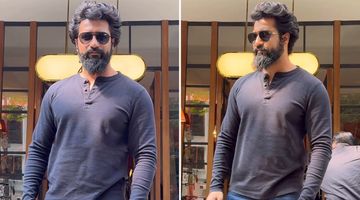At the D.A.V. School, Lahore, in 1916 he came into contact with some well-known political leaders like Lala Lajpat Rai, Anand Kishore Mehta, Lala Pindi Das, Sufi Amba Parsad, Ras Bihari Bose. Kartar Singh Sarabha's supreme sacrifice, the proceedings of the Lahore Conspiracy Case and the Jallianwala Bagh tragedy had a deep impact on his sensitive mind. In response to Mahatma Gandhi's call for non-cooperation in 1921, Bhagat Singh left his school and joined the National College newly opened at Lahore. At this college which was a center of revolutionary activities, he came into contact with revolutionaries such as Bhagwati Charan, Sukhdev, Ranbir Singh, Ram Kishan and Tirath Ram. He passed his F.A. examination but left his studies while he was a B.A. student. He went to Kanpur early in 1924 where he met Ganesh Shankar Vidyarthi, B.K. Dutt, Chander Shekhar Azad and some Bengali revolutionaries. He now became member of the Hindustan Republican Association formed by the revolutionaries of Uttar Pradesh and was initiated into revolutionary activities. He returned to Lahore in 1925. He worked for a Delhi newspaper for six months. After that in association with other revolutionaries, he founded a new association known as Nau Jawan Bharat Sabha with himself as its Secretary. He was arrested in October 1927 for his objectionable activities. Lala Lajpat Rai organized a procession against Simon Commission at Lahore. The brutal attack by the police on Lala Lajpat Rai caused his death on 17th November 1928. The whole of the Punjab was in rage at the death of their beloved leader and Bhagat Singh determined to avenge his death by shooting Scott and other British officials responsible for this foul deed. He shot down Assistant Superintendent Saunders mistaking him for Scott and made a dramatic escape from Lahore. He traveled to Calcutta in the guise of a rich man accompanied by his wife and a servant. After some time, he left Calcutta and established a bomb factory at Agra. To get the attention of the people he threw bombs in the Central Assembly Hall while the Assembly was in session. Bhagat Singh was arrested on the spot. During his trial, Bhagat Singh refused to employ any defence counsel. In the jail, he went on hunger strike to secure humanitarian treatment for fellow-political prisoners. Bhagat Singh alongwith Sukh Dev and Raj Guru was awarded death sentence by a special tribunal on 7th October, 1930. Despite great popular pressure and numerous appeals by political leaders of India, Bhagat Singh and his associates were hanged in the early hours of 23rd March, 1931. Their bodies were cremated on the bank of the Sutlej in Ferozepur. He was just 23 at that time.






























